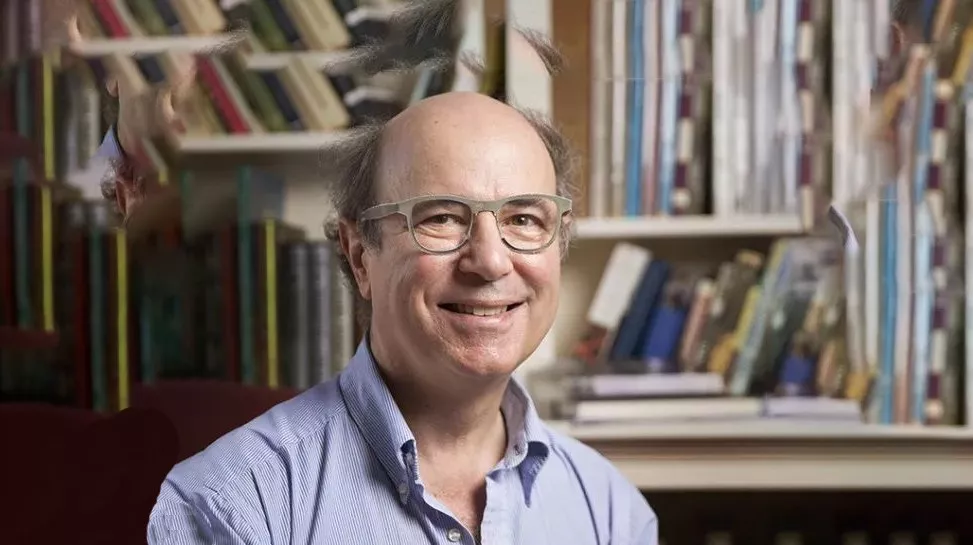撰文 | Frank Wilczek
翻译 | 胡风、梁丁当
中文版
对于很多现代技术而言,一种空缺反而成了技术得以实现的关键,这种空缺正是被称作“空穴”的粒子。
一种被称为“空穴”的粒子,促成了现代技术,也让人们对未来充满了遐想。理解它们是什么、怎么产生的、如何去应用,是上世纪的一项重大科学成就。这个过程也昭显了受好奇心驱动的基础研究在应用中的长期价值。
假想我们从材料的某个原子中,突然挪走一个电子。原子最终将达到一个稳态。此时,在电子缺失的地方就形成了一个缺陷——一个本该有、却没有电子的空位。这个空位就是我们所说的空穴。
因为电子携带一个单位的负电荷,于是,由它的缺失而导致的空穴携带一个单位的正电荷(像质子一样)。在金属与半导体等材料中,空穴能够移动。事实上,由于空穴比质子轻得多,它的移动会显得更加灵活。
为什么这种移动性很重要?
要知道,几乎我们的所有能量都来源于一个巨大的聚变反应堆——太阳——的辐射。树木吸收了阳光的能量后,转化成可用作燃料的木材;一些植物的遗骸经过漫长的时间,在细菌的分解和高压下转化为可以燃烧的煤炭和石油。但是,这些生物过程只能俘获一小部分辐射到地球的太阳能。而且,木材或石油等燃料在燃烧时还会排放温室气体,带来严重的副作用。
另外一种利用太阳能的办法,是利用太阳的辐射使电子脱离原本正常的位置。我们只需要让阳光照射到一种适合的材料——光伏材料上,高能量的光子就能激发原来一直正常运行的部分电子,从而产生空穴。
如果在该材料上加上电压,由于电子和空穴携带着相反的电荷,在电场的作用下就可以产生电流。瞧!一转眼,我们就把光变成了电流,将太阳能转化成了电能。
电能是一种十分美丽的能量。它很便利,目前我们已经拥有很好的方法来储存和传输电能了。并且,电能的使用不涉及燃烧,是一种重要的清洁能源。事实上,由于太阳辐射的能量比人类目前所消耗的多出了大约一万倍,这意味着光伏或将成为未来的主要新能源。
除了刚才提到的方法,我们还可以通过化学的方法来产生空穴。在材料中掺入具有较少活性电子的杂质原子,当它们替代材料本身原子的时候,就会形成空穴。
如果在半导体中同时掺入富含空穴的硼原子和富含电子的磷原子,并以巧妙的方式将它们分别排列起来,我们就能够在半导体中构建出一个个用来控制电流的“水坝”或者“沟渠”。这是固态电子技术的根本策略,而固态电子是现代通信与信息处理的核心技术。
空穴的发现诞生于远离实际应用的理论研究中。1925年,沃尔夫冈·泡利(Wolfgang Pauli)在研究原子光谱时发现了泡利不相容原理 ;它表明在原子和分子中有可能存在空穴。1930年,保罗·狄拉克(Paul Dirac)为了让量子理论和狭义相对论相容,在一个假想的理想化的宇宙材料中引入了空穴的概念——他将其称为反电子,或正电子。而在这些充满创意的结果的激励下,鲁道夫·佩尔斯(RudolfPeierls)等人进行了开创性研究,得到了材料空穴的现代理论。
这群先驱们在作出伟大的发现时,并没有预想到晶体管或者光伏——这些应用是在几十年后才有的。他们只是一群充满好奇心的人,纯粹地想多了解一分这个世界。这或许能带给我们一些启示。
英文版
The particles known as "holes" make the modern world possible and a brilliant future conceivable. Understanding what they are and how to make and use them has been one of the great scientifific achievements of the past century. It highlights the long-term value of fundamental research driven by curiosity.
Imagine suddenly plucking an electron out of an atom of material. Eventually the atom will settle down into a stable state, where the region around the missing electron is marked by a scar-a place where an electron should be but isn’t. A scar of this kind is what we call a hole.
Since they arise from the absence of an electron, which by convention carries a unit of negative charge, holes carry a unit of positive charge (like protons). In some materials, including metals and semiconductors, holes are moveable; indeed, since holes are much lighter than protons, they can move much more nimbly.
Why does this mobility matter? The ultimate source of almost all our energy is radiation flflowing from a giant fusion reactor, our sun. Trees process light from the sun into wood that we can burn; some long-dead plants, broken down by bacteria and put under pressure, turn into petroleum that we can also burn. But these biological processes capture only a small fraction of the solar energy on Earth-and exploiting them brings nasty side-effffects when the burned carbon gets released in greenhouse gases.
A difffferent thing we can do with sunlight is to allow its energy to jostle electrons out of their normal positions. All that’s needed is to expose a suitable material-usually called a photovoltaic-to the sun’s radiance. Its energetic photons can jolt electrons, liberating them and producing holes. If we put a voltage across the material, the electrons and holes will separate, since they hold opposite charges. This makes electrical current flflow. Presto, we've converted sunlight into electrical currents, and solar energy into electrical energy.
Electrical energy is beautiful energy. It's convenient, because we've got excellent ways to store and transport it; it's clean, because no burning is involved. And the fact that the sun rains down about ten thousand times more energy than humans currently consume points to the possibility of a sustainable future with room for growth.
We can also make holes chemically, by mixing in impurities that have fewer chemically active electrons than the atoms they replace. Clever juxtaposition of regions of silicon mixed-or "doped"-with electron-poor boron, rich in holes, and regions doped with phosphorous,
which are rich in electrons, allows us to control flflows of electricity, similar to how dams and trenches allow us to control flflows of water. This strategy is at the heart of solid-state electronics, the core technology of modern communications and information processing.
Holes were fifirst discovered theoretically, in studies far removed from practical considerations. Wolfgang Pauli’s exclusion principle, discovered in 1925 through studies of atomic spectra, showed the possibility of hole-like vacancies in atoms and molecules. In 1930 Paul Dirac, trying to reconcile quantum theory with relativity, was led to introduce the concept of holes-which he called anti-electrons, or positrons-in a hypothetical, ideal cosmic material. The pioneering studies of Rudolf Peierls and others that eventually blossomed into the modern understanding of holes in materials were informed by that intellectual ferment.
Those pioneers didn't have transistors or photovoltaics in mind. The applications came decades later. They were simply curious people, set on understanding the world better. There's a lesson in that.
Frank Wilczek
 弗兰克·维尔切克是麻省理工学院物理学教授、量子色动力学的奠基人之一。因发现了量子色动力学的渐近自由现象,他在2004年获得了诺贝尔物理学奖。
弗兰克·维尔切克是麻省理工学院物理学教授、量子色动力学的奠基人之一。因发现了量子色动力学的渐近自由现象,他在2004年获得了诺贝尔物理学奖。
本文经授权转载自微信公众号“蔻享学术”。
0
推荐



 京公网安备 11010502034662号
京公网安备 11010502034662号 